Fashion rights in Afghanistan, by Atiq Rahimi, Afghanistan
The right to choose what kind of clothes to wear is considered one of the basic human freedoms today. There is a relation between what we wear and what kind of person we are. Like any other thing, clothing and fashion for both women and men in Afghanistan are influenced more by frequent changes in political regimes and types of governments and its consequences rather than changes in fashion trends. Different types of governments and regimes each following a different ideology imposed or promoted a variety of dress codes and fashions to Afghan urbanites.
In the 1920s, in a failed attempt, king Amanullah was the first Afghan ruler who imposed new dress codes in Kabul. Upon return from his world tour in 1928, he demanded that Afghan men wear Western- Style suits and hats in government precincts of Kabul. Also, he pushed to end the seclusion of women and abolish the veil as part of his social reforms. Traditional Afghan society opposed the king’s reformist ideas, particularly those related to women’s rights, leading to uprisings that forced him to abdicate.
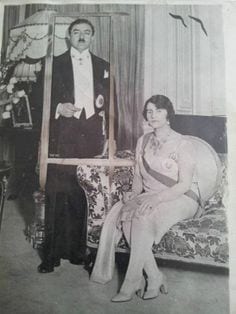
King Amanullah Khan & his wife Soraya Tarzi
Learning from Amanullah Khan’s failed experience, the Musahiban dynasty (1929 to 1978) treated the traditional Afghan society with caution. They did not undertake major social reform programs that could affect people’s life directly, especially in rural areas where people were highly conservative and autonomous in their social relations and despised state’s direct interference in their matters. However, this long time of peace in Afghanistan gave a chance to the state and urban population to develop clothing and fashion taste. The king, courtiers and state officials wore western clothes at this time. Prime Minister Daud ended mandatory veiling by simply having the wives of the royal family and high government ministers sit unveiled in the reviewing stands at the National Day parade in 1959 where everyone could see them. He arrested conservative clerks who opposed it and charged them with treason.
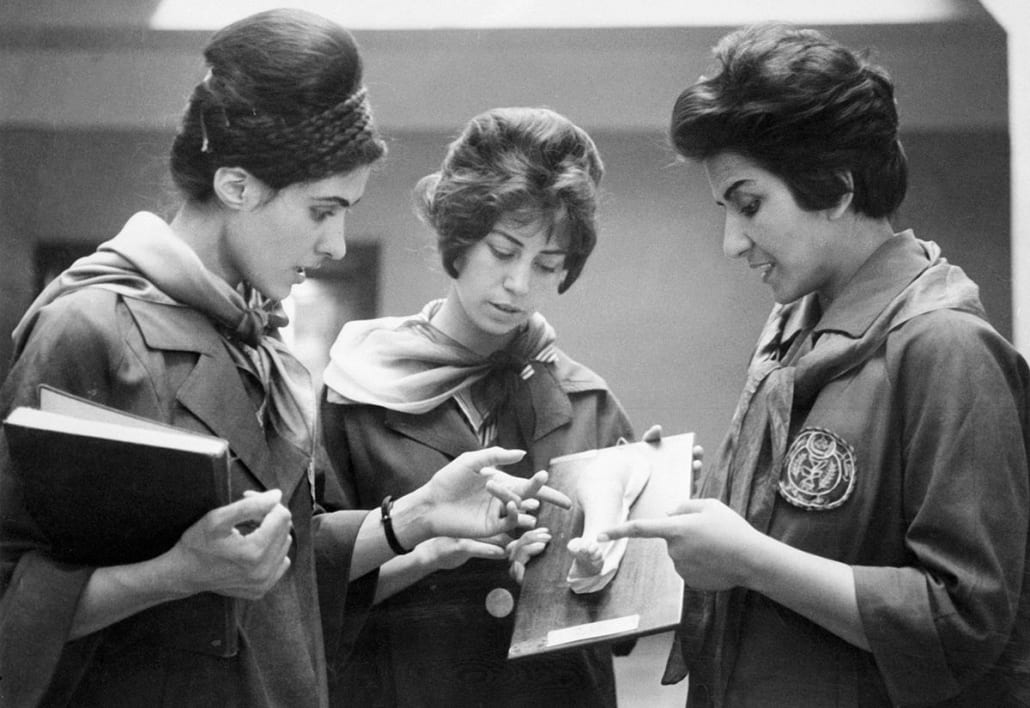
Women in Afganistan in the 60s-70s
A major shift in fashion happened during the rule of the People’s Democratic Party of Afghanistan (1978 to 1992) and invasion of Afghanistan by the Red Army (1979 – 1989). The government undertook a series of social reforms including mandatory enrollment of boys and girls up to secondary school. Veils became voluntary, the participation of women increased considerably in politics, civil service, education, music, art, cinema, and other sectors. With the increased participation of women and girls in social life and aid flowing from the USSR as well as development in arts and cinema, fashion and clothing evolved rapidly to the extent that women and girls started wearing skirts and men started western outfits and adopting hairstyles mimicking The Beatles in Kabul. These changes were, however, restricted to Kabul and mostly employed women and men in the government, party members, students, and artists who adopted the changes.
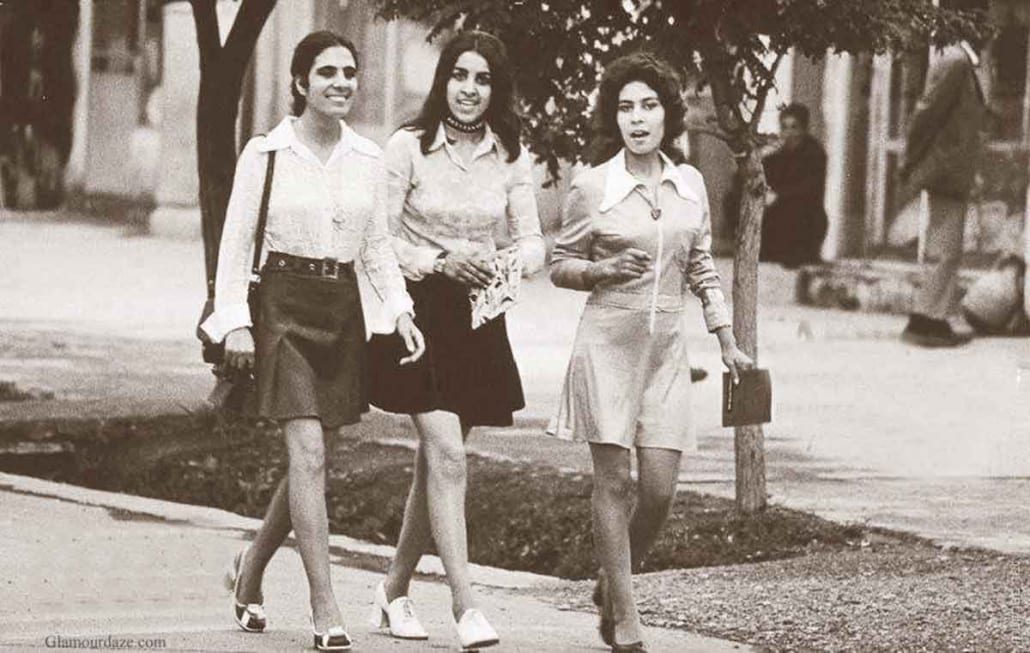
Fashion Freedom in Pre-War in Afghanistan
Today, many Afghan youths envy that era and feel nostalgic about cultural improvements of that time in Afghan history as they hear stories from their elders, look at the pictures or watch recordings of the National Radio and Television archived or preserved by people.
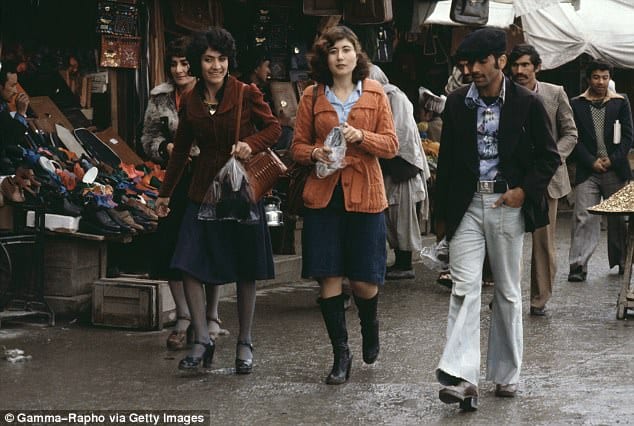
Kabul – 1970s
Mujahideen Islamist groups from different factions, divided primarily based on ethnicity, took Kabul in 1996 whose inhabitants were seen as communist infidels. Majority of Mujahideen leaders and soldiers were coming from villages where people were more conservative in regard to social freedoms – Most of them had never even been in Kabul before. Veils became an essential part of women dressing again. A senior female teacher who was in Kabul at the time told me that on the first days of Mujahideen’s entry in Kabul, terrified women and girls who did not have long veils used bedsheets instead to cover themselves for going out. Later on, Punjabi dresses and long veils replaced the common clothes for Afghan women.
Mujahideen’s rule passed in chaos and civil war resulted in total destruction of Kabul city, forcing thousands of Kabul inhabitants to migrate to neighbouring countries. Those who remained were struggling for survival.
Clothing and fashion changed dramatically with the Taliban taking control of Afghanistan, the likes of which Afghan people, especially the urban population, had never experienced before. The Taliban, who follow the Salafi ideology and are one of the most misogynist Islamic extremists, decreed that women should wear the Burqa. Soon, they deprived women of their right to education, work, travel, or even to take pictures. They forced men to grow long beards and wear traditional Afghani dresses. They enforced these orders with a special police force or by creating the Vice & Virtue police.
Cinema, films, or fashion magazines, perceived as sources that inspire fashion were banned too during the Taliban era, and possessing such items was followed by punishment.
The Taliban rule was accompanied by extreme poverty and drought. The majority of people could barely afford to feed themselves and caring for fashion and clothing lost significance.
US-led international intervention in 2001 formed a semi-democratic political system in Afghanistan that generated great hope for the development of the country. Afghanistan was showered with international aid and the new political system recognized equal rights for women and men. With right to work and right to education restored for women, millions of girls and women joined schools and universities. Various projects were directed to empower women and girls and the government adopted policies to increase their political and social participation throughout the country. Clothing and fashion also evolved along with development in other sectors, and more people started wearing modern clothes in major cities once again.
Returnees from Iran and Pakistan, who were born and raised there, brought with them the prevailing clothing and fashion of their host countries to Afghanistan. Most of them settled in big cities of Afghanistan and inspired others to adopt their way of clothing and fashion. Millions of Afghans shifted to Kabul and other major cities seeking greater job and education opportunities. Therefore, one can see a mix of traditional and modern clothing and fashion styles in Kabul.
Current Afghan laws do not impose restrictions on clothing or fashion, but it is actually families and society in general that control to what extent men and particularly women may expose their body in public spaces now. The Ministry of Education has introduced black dress and white scarf as public school uniforms for girls throughout the country, despite many attempts to change it to blue which is more welcomed and is considered as more suitable for the country’s weather conditions. Private schools have adopted different school uniforms for girls and boys.
Women’s sexuality is policed by the society in Afghanistan; short veils and thin coats are still an essential part of women dressing and almost no girl or woman dares to appear without a short veil outside their home. They must wear a veil even if it doesn’t fully cover their head.
Aryana Saeed, a popular Afghan singer, publicly burned the skinned color outfit that she wore in a concert on May 13, 2017, in Paris after it ignited condemnation from conservatives and religious figures back in the country. Aryana received thousands of hate comments on her social media accounts but there were also people and many of her fans who supported her. This is one of the events in which we can clearly see the sensitivity of society to changes in women’s clothing.

Aryana Saeed burning her dress after religious figures and members of the public criticised her for wearing it during a recent concert
One of the main characteristics of the change in the way men and women dress and fashion in Afghanistan in the last 19 years is that these changes are not specific to Kabul; clothing and fashion in other cities in Afghanistan have also changed and people wear modern clothes sporadically.
With the ongoing peace talks in Doha, the decision of the United States to withdraw its forces from Afghanistan and with the possibility of a serious regime change, Afghan people, especially the urbanites are concerned. Reports from Taliban-controlled areas show that the Taliban’s outlook has not changed and that they still want a strong Taliban regime that controls all aspects of peoples’ lives by imposing a number of social restrictions, including stricter dress codes for men and women.
Lately, in a virtual open forum on peace, Dr Sima Samar, State Minister for Human Rights and International Relations and members of UN High – Level Advisory Board on mediation expressed her concern about women’s rights and return of social restrictions: “One of the issues I fear as a citizen of Afghanistan about women’s rights is that a number of women and more men say that women could stay at home so we can achieve peace. For me, if I stay at home, there is no peace. When I stay at home and someone else sets restrictions on my clothes, dictate how my behaviour should be, that my boots should not make sound, and that no one should see my face or my hands and all these issues being controlled, then this is not peace for me, this would be [a life] in prison.”
Ms Shamsieh Alizadeh, who topped the country’s national university entrance exam this year, told New York Times “We have been through a lot. I hope the Taliban let the Afghan women live their dreams. We don’t want to be limited.”
At the opening ceremony of the Doha talks, Farhnaz Frotan, an Afghan journalist interviewed the Taliban’s spokesperson unveiled. Many social media activists saw the move as a symbol of the formation of a new generation with new values that the Taliban cannot ignore.
After living for almost two decades with more social and political freedoms under the current system, a significant number of Afghan people are accustomed to this way of life and many believe that the Taliban can no longer establish the social restrictions that they once imposed during their rule in the 1990s. After all, the urban population with new values and lifestyle have multiplied. It is very likely that most of the 5 million Kabulis, and people living in other cities, will push back social restrictions that the Taliban may wish to re-impose.
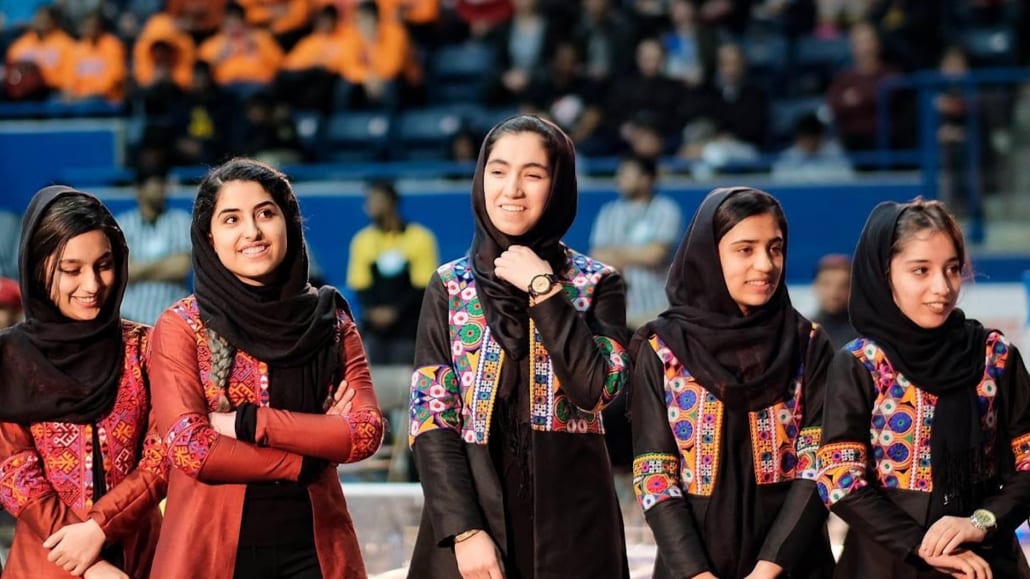
Afghanistan’s all-girl robotics team




Leave a Comment
Want to join the discussion? Feel free to contribute!